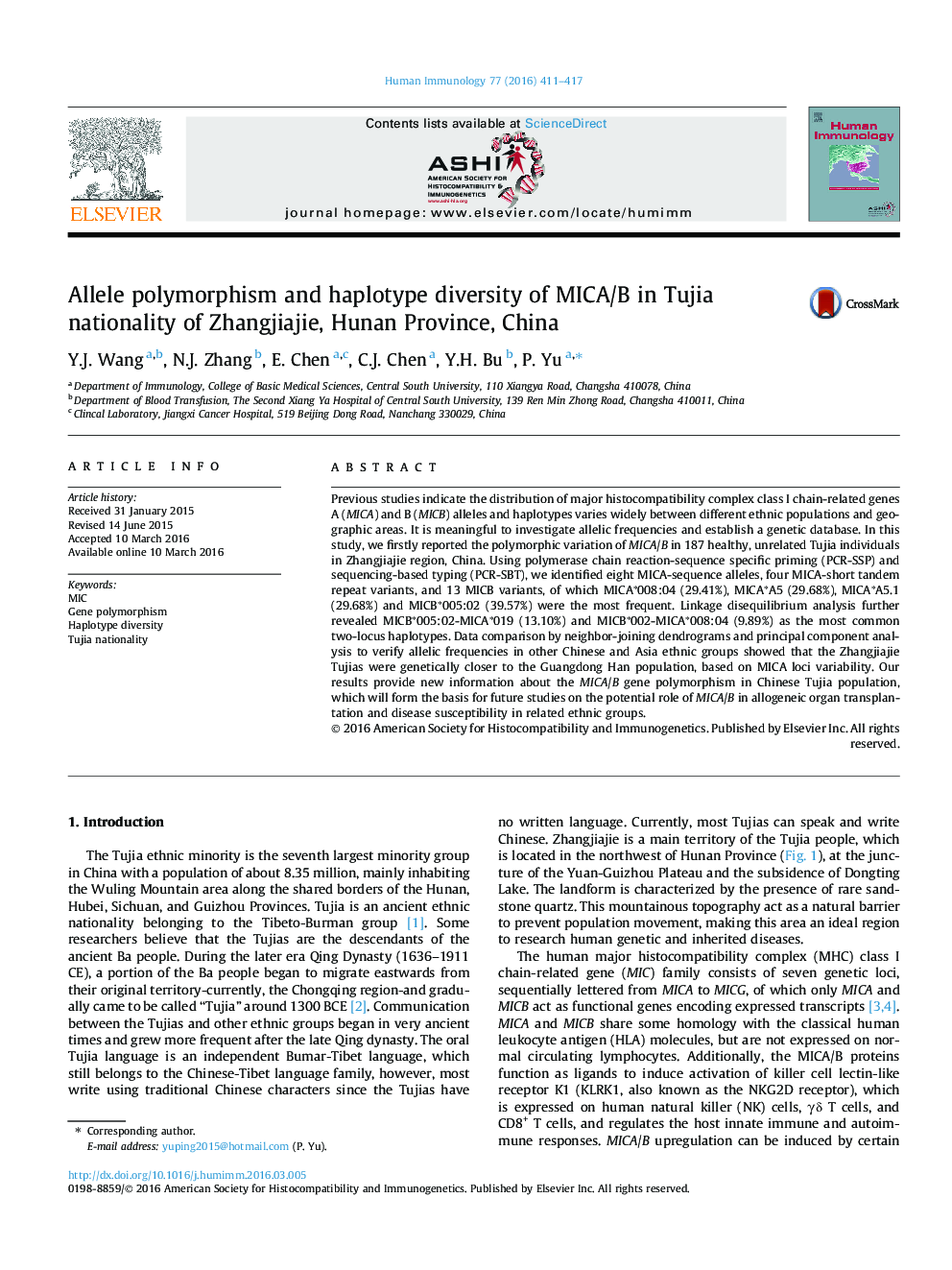| کد مقاله | کد نشریه | سال انتشار | مقاله انگلیسی | نسخه تمام متن |
|---|---|---|---|---|
| 3349521 | 1216355 | 2016 | 7 صفحه PDF | دانلود رایگان |

Previous studies indicate the distribution of major histocompatibility complex class I chain-related genes A (MICA) and B (MICB) alleles and haplotypes varies widely between different ethnic populations and geographic areas. It is meaningful to investigate allelic frequencies and establish a genetic database. In this study, we firstly reported the polymorphic variation of MICA/B in 187 healthy, unrelated Tujia individuals in Zhangjiajie region, China. Using polymerase chain reaction-sequence specific priming (PCR-SSP) and sequencing-based typing (PCR-SBT), we identified eight MICA-sequence alleles, four MICA-short tandem repeat variants, and 13 MICB variants, of which MICA∗008:04 (29.41%), MICA∗A5 (29.68%), MICA∗A5.1 (29.68%) and MICB∗005:02 (39.57%) were the most frequent. Linkage disequilibrium analysis further revealed MICB∗005:02-MICA∗019 (13.10%) and MICB∗002-MICA∗008:04 (9.89%) as the most common two-locus haplotypes. Data comparison by neighbor-joining dendrograms and principal component analysis to verify allelic frequencies in other Chinese and Asia ethnic groups showed that the Zhangjiajie Tujias were genetically closer to the Guangdong Han population, based on MICA loci variability. Our results provide new information about the MICA/B gene polymorphism in Chinese Tujia population, which will form the basis for future studies on the potential role of MICA/B in allogeneic organ transplantation and disease susceptibility in related ethnic groups.
Journal: Human Immunology - Volume 77, Issue 5, May 2016, Pages 411–417